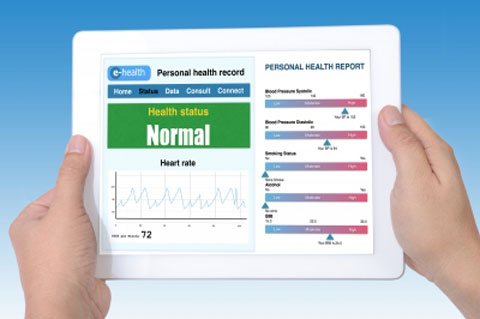Electronic health records have now become common, but sharing and implementation of that health data is still not widespread. What gives?
March 16, 2015

Electronic health records have now become common, but sharing and implementation of that health data is still not widespread. What gives?
Marie Thibault
Electronic health records (EHRs) have now become relatively commonplace, showing up in hospitals and doctors’ offices, but has the doctor visit or hospital stay changed much as a result? Just because all your doctors have EHRs, this doesn’t mean one specialist has all the information that your primary care physician or another specialist does. When will patient data become truly portably and impact care?
Well, according to one report at least, it seems that EHRs have been suffering from too many strict rules and not enough business sense. A policy brief published Monday by The Brookings Institution points out that inflexibility, ease of use, lack of cost and coverage information, and inefficient exchange of information are the main reasons interoperability remains elusive.
The issue was also discussed at a recent event on health IT, hosted by Brooking’s Engelberg Center for Health Care Reform.
The authors credit the Meaningful Use (MU) program with speeding the purchase and use of EHRs and IT systems, but points out that MU is too inflexible for the next phase of implementation. The specific MU requirements mean that an EHR may fit one doctor’s needs but not another. One example from the brief is that a system may not be detailed enough for a chronic disease specialist who tracks the same patient for years, but may be too detailed and cumbersome for someone like a cosmetic surgeon.
Usability also seems to be a barrier, as MU emphasizes certification requirements over making the end user comfortable with the system. Cost and insurance coverage is another key element missing from MU certification requirements. And perhaps most frustratingly, the information that goes into an EHR doesn’t always get exported or used by other stakeholders, like health plans, employers, and insurers. This means the same information is entered manually, in an inefficient process that doesn’t allow for sharing of data to reduce costs and improve patient care.
The brief authors recommend that MU payment incentives shift to become value- and outcome-based, writing, “This would increase market forces to drive vendors to create tool that are most useful to each end user (e.g., providers and patients) rather than to a general set of prescriptive health IT capabilities."
According to the authors, this shift can be achieved by separating EHR functionality from MU process measures, linking MU monetary incentives with outcome-related metrics, encouraging value-based payment models, and focusing on usability. Other recommendations repeatedly emphasize keeping a market mindset and implementing EHRs in ways that make business sense, such as cost and coverage data interoperability.
Interoperability remains front of mind for regulators and legislators. FDA’s Center for Devices and Radiological Health (CDRH) is expected to issue draft guidance on medical device interoperability at some point; the topic made CDRH’s “B-List” for fiscal year 2015. Just last week, Representative Michael Burgess (R–TX) released a draft of an interoperability bill to Open Health News.
Marie Thibault is the associate editor at MD+DI. Reach her at [email protected] and on Twitter @medtechmarie.
[Image courtesy of PANDPSTOCK001/FREEDIGITALPHOTOS.NET]
You May Also Like


